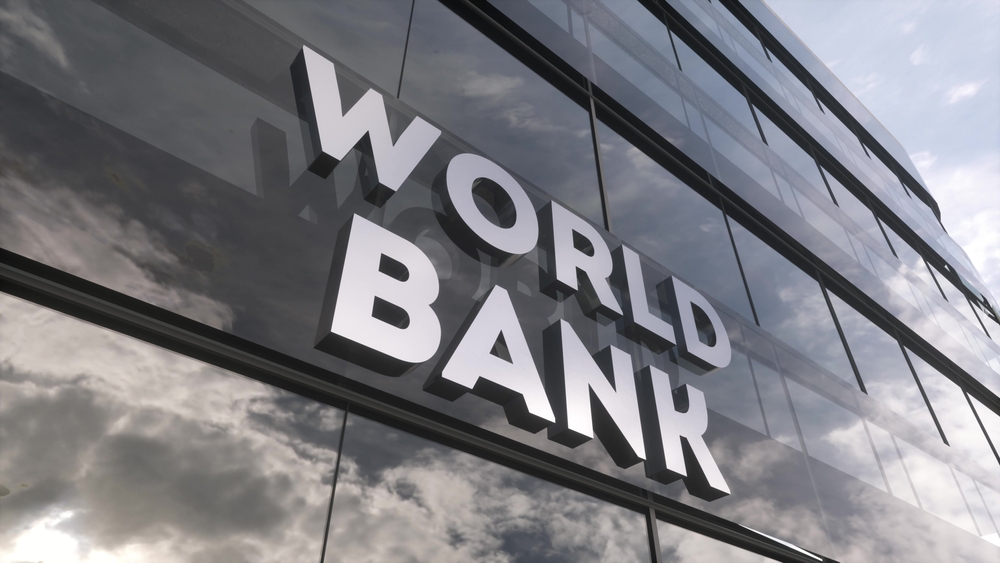WORLD BANK COMMODITY MARKETS OUTLOOK

LarichD/Shutterstock
Global commodity markets are navigating 2025 amid heightened volatility, driven by escalating trade tensions, geopolitical instability, and shifting patterns in supply and demand. The World Bank’s April 2025 Commodity Markets Outlook highlights a sharp decline in industrial commodity prices and forecasts continued downward pressure through 2026, with significant implications for the mining sector.
Recent Volatility
Industrial commodity prices experienced a steep drop in early April 2025, ending several months of relative stability. This latest shock extends a decade already marked by record commodity price volatility. Since 2020, markets have weathered the COVID-19 pandemic, Russia’s invasion of Ukraine, and conflict in the Middle East, all of which have contributed to rapid and frequent price swings. Weather-related supply disruptions, particularly in agricultural and energy markets, have added further instability. The result has been shorter, sharper commodity price cycles, with booms and slumps more pronounced but of briefer duration than in previous decades.
Looking Ahead
Forecasting through the end of 2026, the World Bank projects aggregate commodity prices to fall by 12% in 2025 and a further 5% in 2026, reaching their lowest levels in six years. More than half of the commodities tracked are expected to see price declines in 2025, many by over 10%. And while nominal prices will remain above the 2015–19 average, inflation-adjusted prices are expected to dip slightly below that benchmark.
Metals and Minerals
Metals and minerals prices are projected to decline by 10% in 2025 and 3% in 2026. Tin is the only major base metal expected to see price gains, due to constrained supply and a limited pipeline of new projects. Prices for copper, aluminum, nickel, and zinc are all expected to fall, driven by weakening global manufacturing and industrial activity. Iron ore prices are forecast to underperform other metals, with declines of 13% in 2025 and 7% in 2026, as major producers expand output and new mines come online, while China’s property sector remains sluggish.
Precious Metals
In contrast to base metals, precious metals are expected to remain strong. Gold prices, supported by safe-haven demand amid policy uncertainty and financial volatility, are projected to stay more than 150% above their 2015–19 average through 2026. Silver prices are also forecast to approach record levels, driven by similar safe-haven dynamics despite subdued industrial demand.
Risks and Uncertainties
The primary downside risk to the Bank’s outlook is a sharper-than-expected slowdown in global economic growth, exacerbated by worsening trade relations or tighter financial conditions. For metals, demand is highly sensitive to industrial activity; further deterioration in global manufacturing could deepen price declines, particularly for copper and aluminum.
Offsets are possible, however. Geopolitical tensions remain a persistent threat. Escalation in the Middle East or new sanctions on major producers could disrupt supply and trigger price spikes, especially in energy commodities. Extreme weather events linked to climate change-such as heatwaves, droughts, and floods-pose risks to both energy and agricultural supply chains, potentially causing localized or global price surges. Conceivably, a rollback of trade restrictions could boost economic growth and commodity demand, leading to higher prices.
Implications for Miners
The report warns commodity producers to expect continued volatility. The authors expect that anticipated decline in metals prices will pressure margins and could dampen investment in new mining projects, particularly for higher-cost producers. The much-touted shift toward electric vehicles and renewable energy is likely to support longer-term demand for critical minerals (e.g., lithium, cobalt, nickel), although short-term prices for many of these are still expected to soften.
The proliferation of trade restrictions—now ten times higher than pre-pandemic levels—has increased market fragmentation and disrupted traditional trade flows. Mining companies must navigate an increasingly complex regulatory landscape, with the potential for sudden tariffs, quotas, or export bans to impact both input costs and market access.
The ability to redirect trade flows in response to tariffs will vary by commodity. Where alternative suppliers or buyers are readily available, price impacts may be limited. However, for commodities with concentrated trade relationships, tariffs can create significant price volatility.
Download the World Bank report here.
A ROUND-THE-CLOCK CLEAN ALTERNATIVE TO FOSSIL FUELS
Achieving high levels of renewable energy is particularly challenging for off-grid mines in remote locations because intermittent PV or wind with costly batteries still require dirty, expensive diesel for backup. Many mines also require high-grade heat for on-site processing and other uses. 247Solar offers the only renewable energy technologies that:
- Integrate seamlessly with PV or wind to provide 24/7 dispatchable baseload power
- Provide industrial grade heat up to 970 ℃ (1800 ℉) for ore processing, steam generation and other applications
- Provide their own backup by burning almost any locally available fuel to produce power even when storage is depleted, eliminating gensets and reducing fuel costs up to 80%
Get in touch to learn more
GATES, BEZOS-BACKED MINING VENTURE MOVES INTO DRC

KoBold Metals/Mining.com
KoBold Metals is a mining startup backed by Bill Gates and Jeff Bezos founded in 2018. The venture specializes in using artificial intelligence to identify untapped critical minerals deposits and already has around 60 active projects across four continents.
Now, the Financial Times reports (via Mining.com) that KoBold is expanding into the Democratic Republic of the Congo, with plans to invest billions into the African nation’s large endowment of resources.
The DRC is currently the world’s biggest producer of cobalt and the leading copper producer in Africa. KoBold plans to apply for licenses to explore for these two critical minerals as well as lithium, of which the DRC holds significant deposits.
Mining.com writes that “The report comes amid heightened trade tensions between the US and China, which saw the latter flex its dominant position in the critical minerals supply chain by placing export restrictions on rare earths.”
In the Congo, the article notes that many of its biggest mines are run by Chinese groups, while American companies have had little presence. Benjamin Katabuka, the country’s newly appointed director general, told the FT that the Congolese government is “interested in having some Western investors coming into the country” to balance China’s presence in the nation.
On the DRC’s well-documented jurisdictional risk, Katabuka acknowledged that it has been “difficult” to do business in the country but added that KoBold has assured that government that the company will demand “high standards” for its operations.
Read more here.
EU MODIFIES CARBON BORDER ADJUSTMENTS TO INCLUDE INDIRECT EMISSIONS

Tomasz Makowski/Shutterstock
The European Union has announced amendments to its Carbon Border Adjustment Mechanism (CBAM) regulatory framework. The changes are expected to have significant implications for African exporters, while also creating opportunities for decarbonized miners.
As reported in Mining Weekly, the amendments were discussed during a webinar hosted by the pan-African policy support organisation African Future Policies Hub.
MW writes, “Among the key concerns raised was the inclusion of indirect emissions in the CBAM framework.” Indirect emissions are the carbon emissions generated from electricity consumption during a product’s manufacturing process.
The CBAM amendments will gradually require manufacturers to track and report the carbon intensity of the electricity used in their production processes as well as the carbon intensity of their raw materials, expanding the scope beyond direct emissions from on-site manufacturing.
This poses a particular challenge for African countries such as South Africa, where electricity grids rely heavily on coal-based power generation.
According to MW, “The amendments suggest a phased approach to including indirect emissions, allowing time for businesses to adjust but creating uncertainty about future requirements.” They also provide further incentive for raw materials producers like miners to accelerate their decarbonization efforts, to ensure continued access to the EU’s huge market for themselves and their customers.
Read more.
FOLLOW & JOIN 247Solar
LinkedIn US, LinkedinEU, Twitter, YouTube
Contact: info@247solar.com
